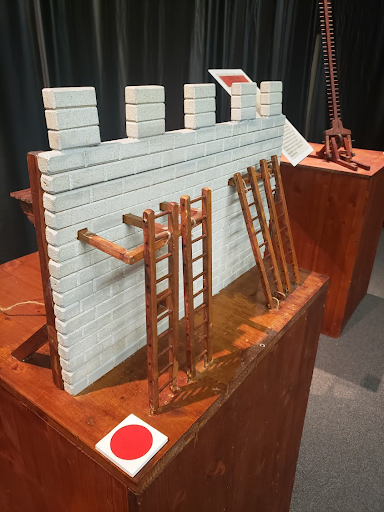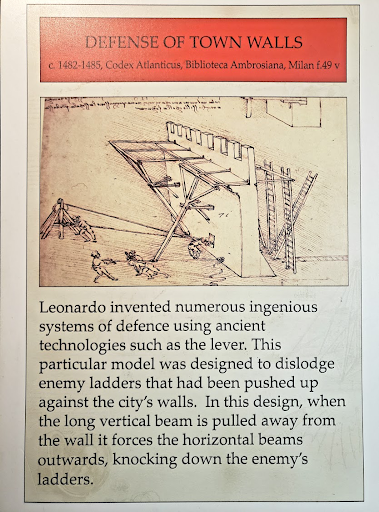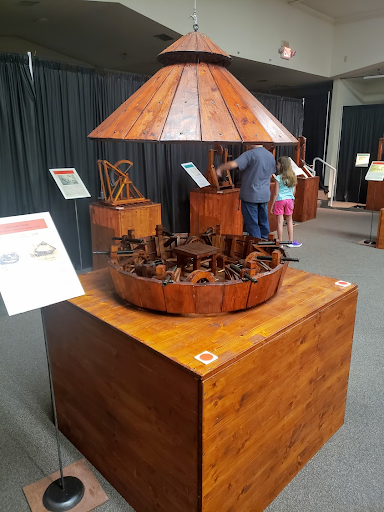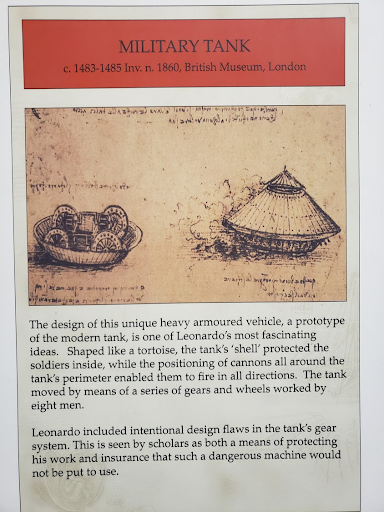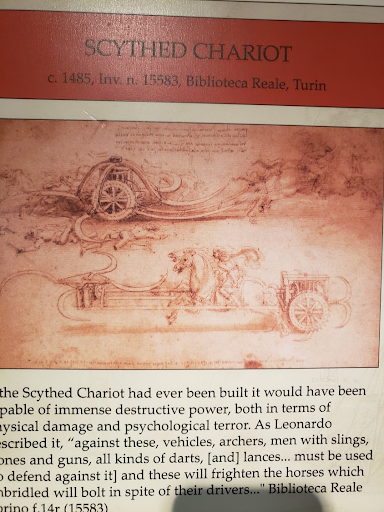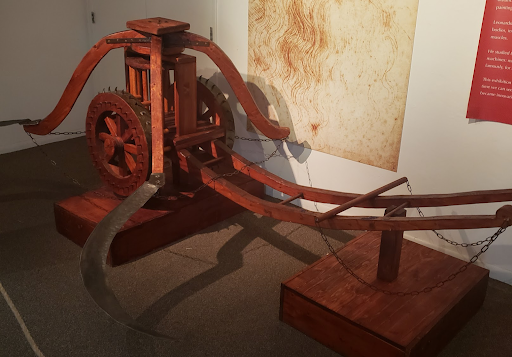Leonardo Da Vinci: Machines and Robotics
- krisalanafuentes
- Jun 26, 2022
- 4 min read
June 11th through September 10, 2022
by: Synthia Durrant
Leonardo da Vinci, a famous renaissance artist, known for painting the “Mona Lisa” and “The Last Supper” also made great contributions to the fields of mechanical engineering, flight, weaponry, and the development of maritime vessels and water survival (1).


It is difficult to conceive that a person with so much talent in painting could also be such a gifted inventor and engineer, but da Vinci was the original “Renaissance Man”, gifted in art, engineering, mathematics, general science, and theory (2).
Models of da Vinci’s works are currently on display at Las Vegas Natural History Museum (LVNHM) located at 900 N. Las Vegas Blvd., Las Vegas, Nevada. The exhibit, “Da Vinci Machines & Robotics Exhibition”, is being presented through September 10, 2022. It is open from 9 am to 4 pm local time and is located in the International Wildlife Gallery (the main gallery to the right as you walk in). Part of the exhibit is also displayed in the Marine Life Gallery (the second gallery to the right).

The da Vinci exhibit provides hands-on, 3-dimensional examples of many of da Vinci’s mechanical inventions. Da Vinci fans of all ages will be excited to know that many of these models (made mostly of cloth, wood, and metal) can be turned, cranked, or otherwise manipulated to help put you into the mind of the genius himself. Displays that can’t be touched are set at eye level to allow you a peek at the intricate details of da Vinci’s inventions, each referencing the specific manuscript and sketch that was used to develop the model.
You will be amazed at the practicality and simplicity of many of da Vinci’s inventions, such as the “Defense of Town Walls” invention. Da Vinci determined that building small holes into defensive walls would allow inhabitants within the walls to safely push attackers’ ladders away before they could be able to climb high enough to gain entrance. The idea is so simple, yet so important, and…so obvious? Sometimes it takes a genius to envision the most straightforward of ideas.
Problem: Marauders are climbing over your walls
Solution: Push their ladders over without endangering yourself
See how da Vinci placed the holes high off the ground as the walls were being built. This allowed them to have little impact on structural integrity. However, if someone placed a ladder on the outside seeking to gain illicit entrance, the townspeople could poke rods through the holes and push the ladders over. What a simple, yet elegant idea!
As you walk through the exhibit and read the explanations included with each model, you will learn that da Vinci wasn’t only artistic, intelligent, and practical, but that he also had a conscience. In 1482, he gained the patronage of the Duke of Milan, Ludovico Sforza. In da Vinci’s time, keeping the patronage of an important noble could mean the difference between a life of relative comfort or one of violence, disease, and poverty.
During his lifetime there were constant skirmishes and battles between the many Italian city-states (3). To give some perspective on the era in which da Vinci lived, Niccolo Machiavelli was advising the House of Medici in Florence and the Borgia family was embroiled in ecclesiastical affairs in Rome around the same time da Vinci was inventing weaponry and defense technology for the Sforzas in Milan (3). In fact, it is known that da Vinci completed some sketches related to firearms for Cesare Borgia in 1480 (4).
Da Vinci was contractually obligated to make advanced weaponry for his patron Ludovico Sforza, Duke of Milan, but it is widely believed da Vinci put design flaws into his sketches making them less deadly than they could have been (6).
Whether this was done to keep would-be thieves from stealing his ideas and gaining the upper hand, or whether it was done to secretly hobble his own patron in an effort to circumvent some of the devastations of war, is not known (7). But, the overall effect was that many of his most annihilating designs were never made and so never contributed to the destruction of life.
A well-known example of da Vinci potentially adding a design flaw into a weapon of mass destruction is seen in the “Military Tank” (design c.1483-1485 Inv. n. 1860 British Museum, London) (a model of which is on display at LVNHM). This design was purposefully weakened by inhibiting the way the turret could turn, making it cumbersome and less deadly. Da Vinci could have easily corrected this feature, but he did not. Some assume that it is of this flaw, the “Military Tank” was never produced.
The “tank” would have been large enough for 8 men to fit inside operating various guns and canons (8). Da Vinci designed the gears backward perhaps to foil would-be copy-cats from stealing his work, or perhaps to ensure the tank would not be effective.
Another example of a potentially devastating machine that was likely never produced was the “Scythed Chariot” (c. 1485, n. 15583 Biblioteca Reale, Turin) (also on display at LVNHM). Notes alongside da Vinci’s drawing indicate he designed it in such a way to shelter the horses from the chaos of battle and was concerned that the animals should not be aware of the damage the machine was doing (9).
“The Scythe Chariot” sketch (da Vinci)

Leonardo da Vinci was a genius born into a world where lavish wealth existed alongside shocking poverty. Scientific and mathematics studies were flowering even as most people were not taught to read or write. It could be said that da Vinci did what he needed to do in order to keep his patron happy; designing war machines and creating weapons of mass destruction.
Even so, the genius of da Vinci allowed him to exist in that world, but perhaps to keep his conscience intact. This concerned and compassionate side of the genius is another expression of the complicated mind and nature of Leonardo da Vinci. Don't miss this opportunity to experience the 3-dimensional models, sketches, and quotations of The Master that are on display at LVNHM through September 10, 2022.

References


